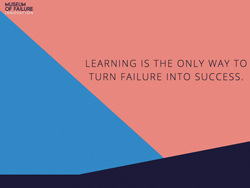 Failure happens. And, sometimes failures happen to the big, disciplined forward-thinking companies that rarely take a misstep in their business dealings.
Failure happens. And, sometimes failures happen to the big, disciplined forward-thinking companies that rarely take a misstep in their business dealings.
Yes, once in a while even Google and Amazon come up with a bad, or perhaps not-so-good, idea. Coke Blak? Harley Davidson perfume? Remember the Amazon Fire smartphone? Probably not. Few people remember it, and even fewer ever bought it, even after Amazon slashed the price to 99 cents for anyone willing to sign a two-year service contract.
But failure isn’t all bad, really. Indeed, failure should be something that we learn from—and even celebrate. This latter idea is the approach Sweden’s new Museum of Failure is taking. The museum opened earlier this month in Helsingborg under the direction of Dr. Samuel West, an American organizational psychologist who is living in Sweden and researching how companies become innovative.
The museum opened with a collection of 60 curated products, including a Colgate brand of lasagne that may have seemed like a good idea at the time (a very short time), all of which for one reason or another flopped not long after their debut. According to the museum’s website, one of the purposes in showcasing these failed products is to provide insight into the “risky business of innovation.”
There’s also a collection of nine objects that are part of a pop-up version of the museum that is going on tour, with stops in Miami, Berlin and Amsterdam.
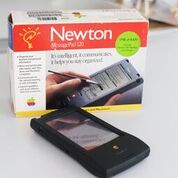 | 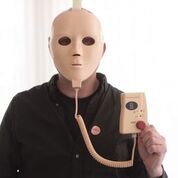 | 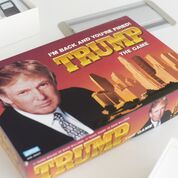 |
The Apple Newton.
| Rejuvenique Facial Mask,
designed to make you as
beautiful as Linda Evans.
| Trump, the Game.
"I'm back and you're fired!"
|
Besides having some dud product launches under their name, Colgate, Amazon and Coca-Cola seem to have something else in common: these three companies managed to rebound just fine from their failures and have a record of success in recent product-development initiatives.
It’s also important to note that a majority of all innovation projects fail, according to the museum, but they still offer an opportunity to provide visitors a fascinating learning experience.
Here’s a brief look at a few of the products featured in the Museum of Failure:
- Amazon Fire – Currently unavailable, according to the Amazon.com website. “We don't know when or if this item will be back in stock,” the website noted.
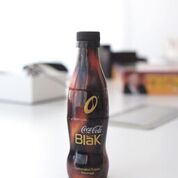 Coca-Cola Blak – Another misstep from the big soft drink company. Coca-Cola Blak, a coffee-flavored soft drink, debuted in 2006 and was discontinued in 2008. Coke told The New York Times that it “constantly tries to innovate and invest in its brands to meet consumers’ changing preferences … [Coke Blak] is a perfect example of this. While the brand had its loyalists, overall it didn’t perform well and was eventually delisted.”
Coca-Cola Blak – Another misstep from the big soft drink company. Coca-Cola Blak, a coffee-flavored soft drink, debuted in 2006 and was discontinued in 2008. Coke told The New York Times that it “constantly tries to innovate and invest in its brands to meet consumers’ changing preferences … [Coke Blak] is a perfect example of this. While the brand had its loyalists, overall it didn’t perform well and was eventually delisted.”
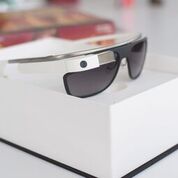 Google Glass – Google Glass is still a work in progress, and an updated version of this smart eyewear is expected back on the market when the developers feel they have a better idea of what features consumers want in such a high-tech product. “Thanks for exploring with us,” the Google Glass website notes. “The journey doesn't end here. You'll start to see future versions of Glass when they're ready (for now, no peeking).”
Google Glass – Google Glass is still a work in progress, and an updated version of this smart eyewear is expected back on the market when the developers feel they have a better idea of what features consumers want in such a high-tech product. “Thanks for exploring with us,” the Google Glass website notes. “The journey doesn't end here. You'll start to see future versions of Glass when they're ready (for now, no peeking).”
 Harley-Davidson “Hot Road” Perfume – A brand extension launched in 1996 that didn’t even come close to hitting the sweet spot of target among Harley’s extremely loyal consumer base. The perfumes and colognes contained woody notes with hints of tobacco.
Harley-Davidson “Hot Road” Perfume – A brand extension launched in 1996 that didn’t even come close to hitting the sweet spot of target among Harley’s extremely loyal consumer base. The perfumes and colognes contained woody notes with hints of tobacco.
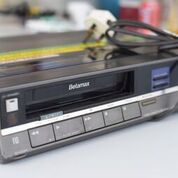 Sony Betamax – Sony announced in late 2015 that it would stop making Betamax video tapes in March 2016, about 40 years after the product was introduced and, according to some observers, “30 after it became irrelevant.”
Sony Betamax – Sony announced in late 2015 that it would stop making Betamax video tapes in March 2016, about 40 years after the product was introduced and, according to some observers, “30 after it became irrelevant.”